Here is a slide show covering some of the work I did in my PCB Fab class.
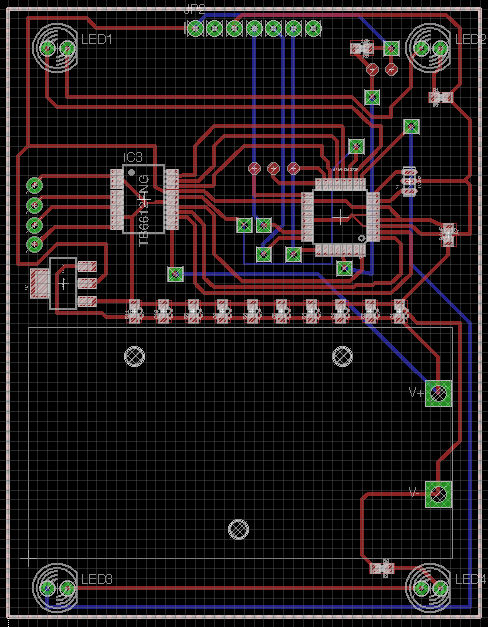
Here is a slide show covering some of the work I did in my PCB Fab class.


While looking into performance artists I noticed an association with flash mobs and starting reading about them. Surprisingly I found that the “flash mob” concept was “invented” buy an editor for Harper’s Magazine named Bill Wasik; In his own description this was meant to be a social science experiment. However, after reading this week’s reading by Lucy Lippard and Wasik’s own description of the event It seems to fit in the cannon of performance and conceptual art.

The first flash mobs were organized by Wasik in 2003 via email chains. It seems that the basic concept was a criticism of a hypocritical conformist culture.
“I was pointing out that hipsters, our supposed cultural avant-garde, are in fact a transcontinental society of cultural receptors, straining to perceive which shifts to follow.”
Wasik makes clear that much of the project or “experiment” was meant to stoke the vanity of his participants by creating a sense that their special knowledge and conformity gave them a form of power over others who were out of the loop. Often it seems these displays of power were deployed in a self-ridiculing way (Wasik seems to have some contempt for the “hipsters” whom he considers his participants), such as the first successful flash mob which took place at the Herald Sq. Macy’s. In this case a large group following instructions quickly grew around a specific rug in the Macy’s show room and explained to staff and passersby that they were a collective from Long Island looking for a “love rug” and had to make the decision as a group. Wasik says that a major inspiration for this was Stanley Milligram’s body of work. Wasik writes, “The Milgramite tradition in art would be defined, I think, by the following premise: that man, whom we now know to respond predictably to social forces, is therefore himself the ultimate artistic medium”. This reminded me a lot of Lippard’s example of the artist who locked their gallery attendees in an empty room until they attempted to break out or the artist who mailed a list of orders to a dictator.
Wasik was able to keep his involvement in these flash mobs a mystery for many years until he sought out a corporatized adoption of the flash mob used as a promotion for a branded concert series. later, in a 2006 article for Harper’s Wasik then describes the process of developing the flash mob, its development of a international following, the backlash, and finally the corporatization as a piece in itself, calling each one a step. Ultimately Wasik considerers the moral implications of having introduced yet another instantiation of mindless youth conformity but then defends his work with the words of Stanley Milligram:
“Milgram relates the story of a young man who had been through the study in 1964 and six years later sent a letter to Milgram telling him that, as a result, he was seeking CO status to avoid fighting in Vietnam.
‘He was going to be sent by our government to Southeast Asia to drop napalm on innocent villagers, to despoil the land, to massacre. He informs me, as many others have done, that the experiment has deepened his understanding of the moral problems of submitting to malevolent authority. He has learned something. He takes a stand. He becomes a conscientious objector. Has he been victimized by the experiment, or has he been liberated by it'”

Works consulted:
https://en.wikipedia.org/wiki/Stanley_Milgram
https://en.wikipedia.org/wiki/Flash_mob
Lucy Lippard “Six Years: The Dematerialization of the art object from 1966 to 1972”
I wasn’t really able to complete all my goals this week with regards to making an algorithmic design for the laser cutter but I do think I now have a solid understanding of how I will complete it eventually. The concept I’m working towards is essentially a type of grip for the back of a smartphone.
The inspiration for this product comes from a device I already own that fixes a hard plastic ring to the back of the phone.


In my first attempt last week I developed a basic design for my phone grip out of two disks with a hole in the center connected by some elastic cord.
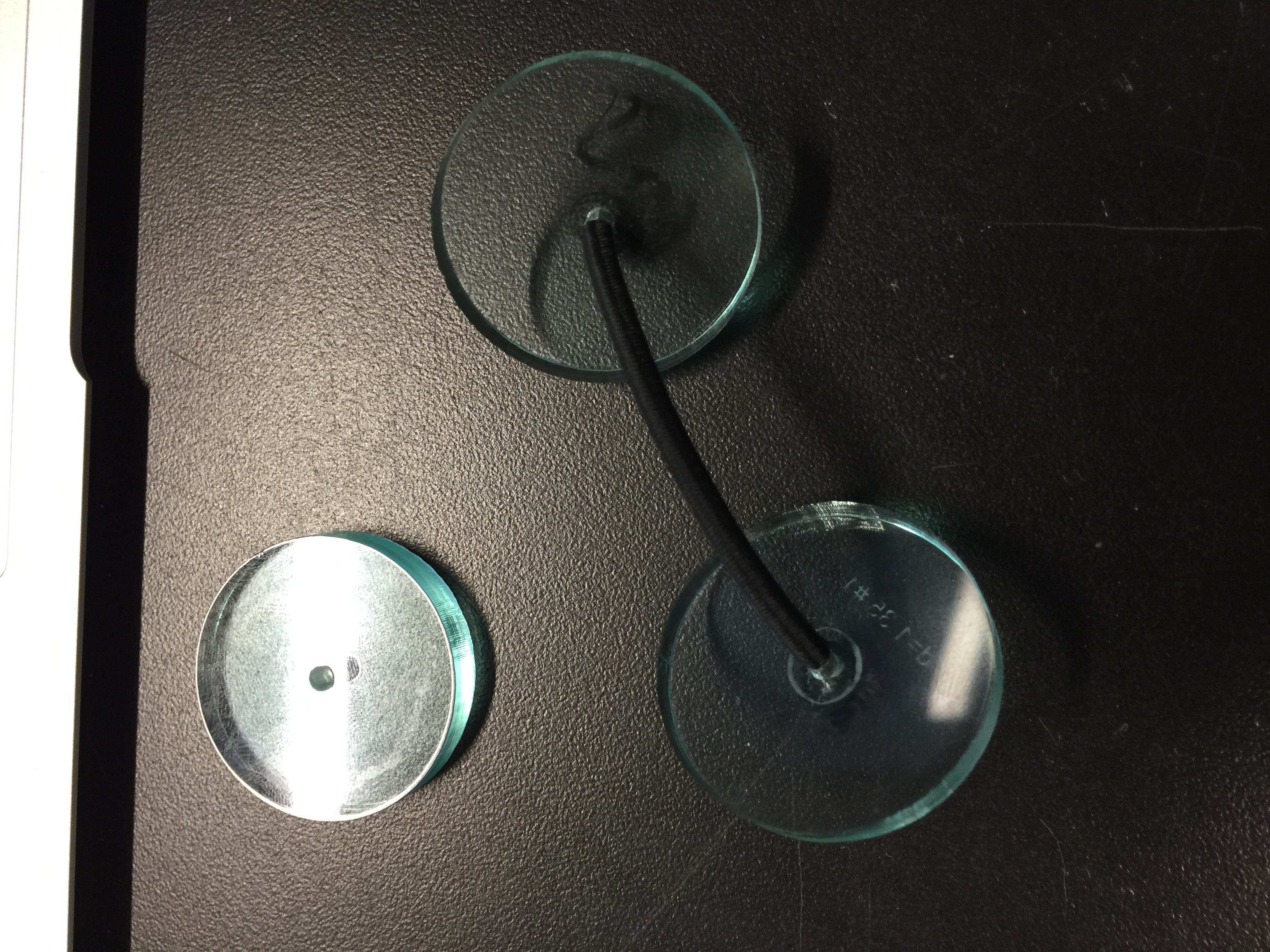
It occurred to me that the base for these bungee cords could be almost any shape as long as they maintain some minimum surface area with the phone (to ensure that the adhesive will be able to resist any forces pulling the bungee cords away from the phone). So my goal for this week was to find or develop some software that will allow me to rapidly make permutations of these bungee bases without radically altering the surface area. This requires an equation know as the shoelace formula that takes all there vertices of a shape and calculates the area. I had a hard time with processing vectors since most of my background was in p5 but I think with more time I could successfully implement it. Lacking a sketch to generate these shapes I tried to imagine a few varieties: 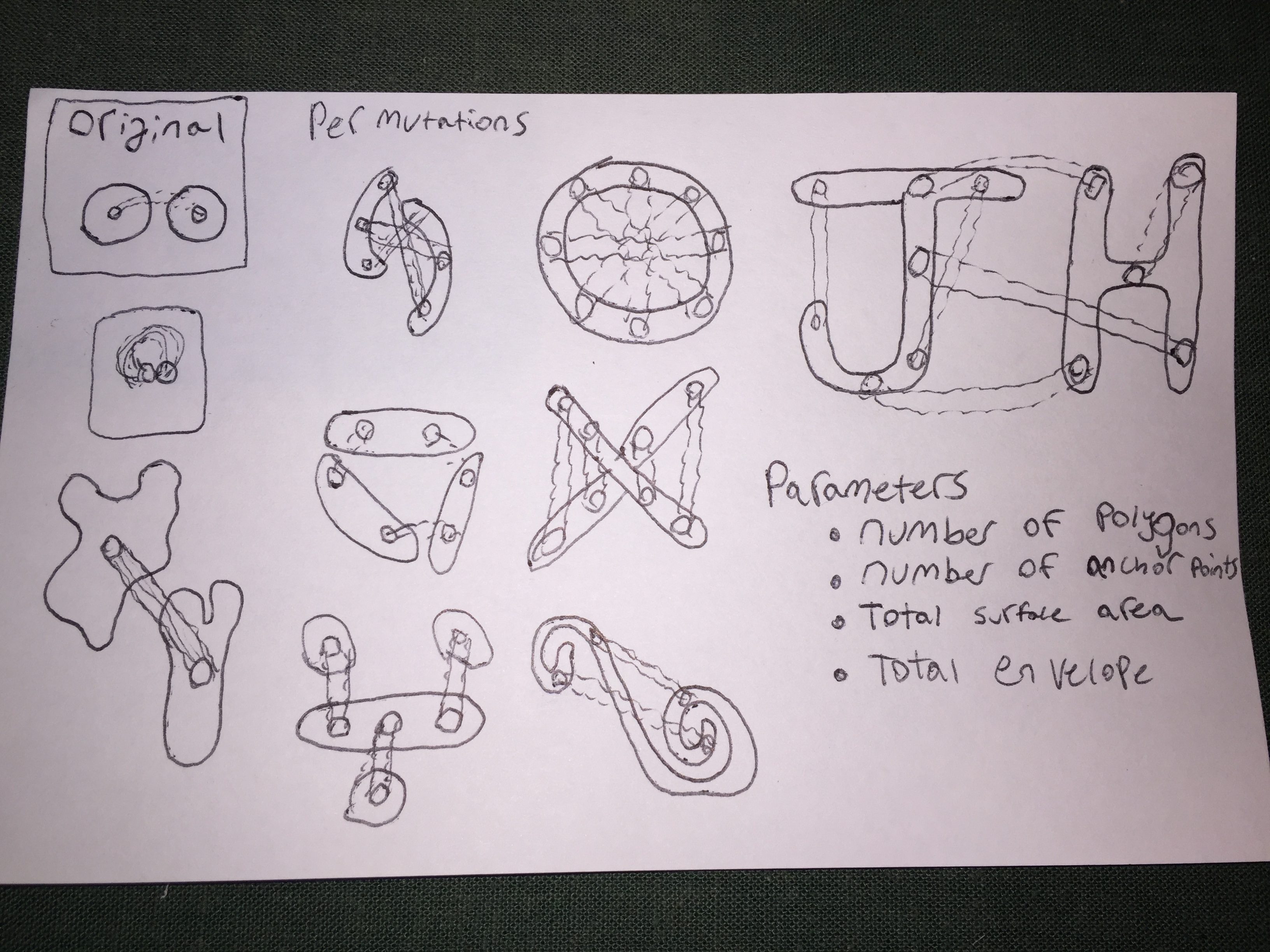
In my attempts in Processing I came up with a few bloby objects that could work but this is far from what I’d like the final software to look like.
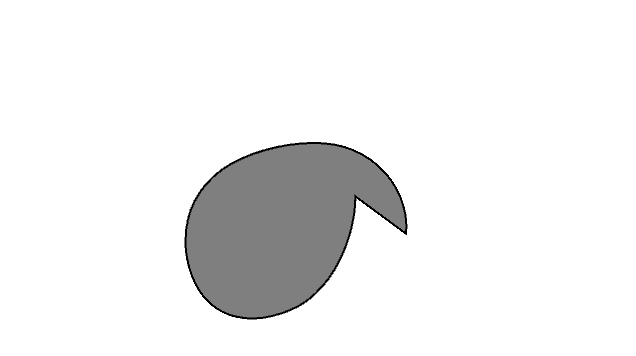
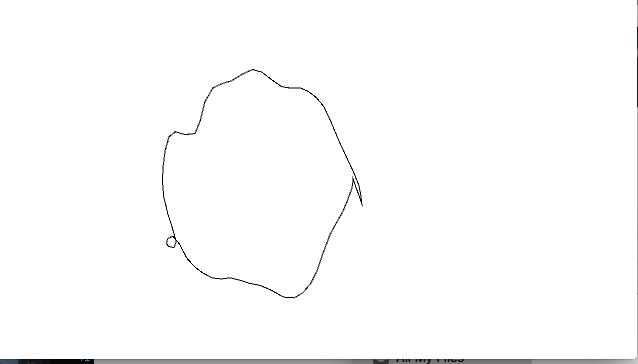
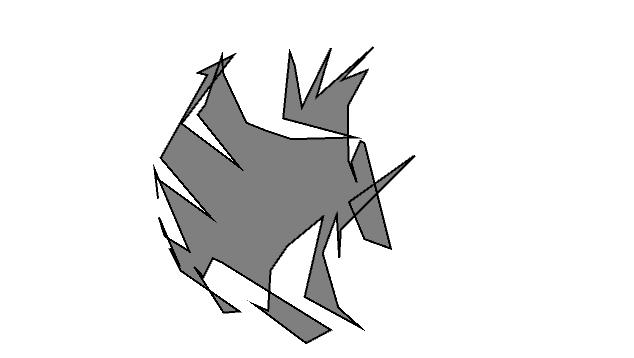
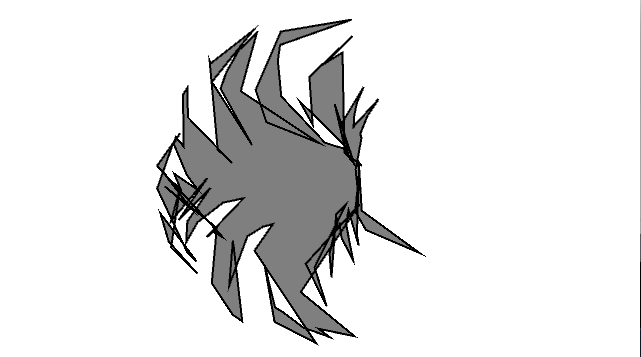
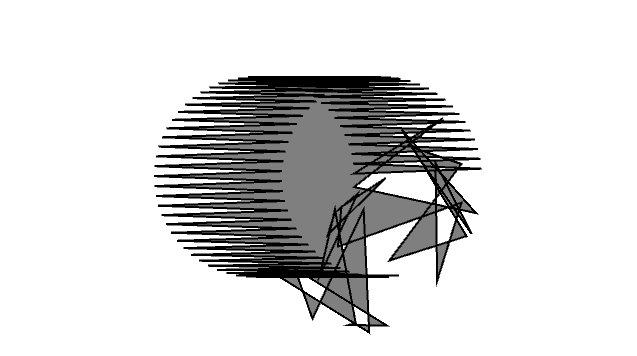
I’ve been interested in “density” as a characteristic of place since I was first introduced to the term. After reading the material for this week I realize that in someways I’ve really been interested in the system(s) of density for as long as I can remember. To this day I like to play city building games with the goal of creating as layered and self-contained of a metropolis as possible. Following this interest into the realm of known artists I remembered an architect named Paolo Soleri. Soleri is know for, among other things, his interest in “arcology”, a structure meant to host “very densely populated, ecologically low-impact human habitats”.

Many of Soleri’s Arcology concepts appear in his book Arcology – City in the Image of Man (1969). The goal of these arcology was to provide a model for an alternative system of sustainable urban development and generally human life.
“Soleri bases his entire arcology neither on economic, social, or industrial considerations but on a philosophical system. It is so all-embracing in its scope that it relates the arcological city unity to the entire evolution of organic life, from the proto-biological primordial ooze to an as yet unevolved Neo-Matter …. Insisting that nature and human evolution work as vectors or parallel progressions, he ties the future fate of mankind to the same increasing complexification that has marked the rise of our organism from the amoeba.” —Sibyl Moholy-Nagy The Architectural Forum, 1970

The term arcology, which Soleri coined, is a portmanteau of “Architecture” and “Ecology”. Through Donella Meadows’ identification of leverage points this seems like a great (though apparently unsuccessful) attempt to change the paradigm of urbanization, as these renderings, “take you outside the system and force you to see it whole.”
Ultimately, I am a bit conflicted about Soleri’s arcology. On the one hand this does seem to satisfy a desire for efficiency and system awareness that I feel is sometimes lacking in environmental or urban focused work. In addition, I think that there is a general bias, at least in the US, against large scale urbanization and planning that something like this requires. So I think mapping out a series of habitats like this is important. It communicates the subtle idea that humans don’t necessarily have to be in nature to work with nature. And that the systems that make existing cities so productive culturally, economically and politically can be harnessed in an intentional and pointed way. On the other hand, these arcology can be seen as further obfuscating the already “unconscious” role infrastructure plays in our lives and would deny the largely self organizing qualities of our existing urban systems. Either way, Arcology – City in the Image of Man is a totally beautiful book and Soleri’s ideas have spawned a whole community dedicated to this kind of vision.
Works consulted:
https://en.wikipedia.org/wiki/Arcology
https://en.wikipedia.org/wiki/Paolo_Soleri